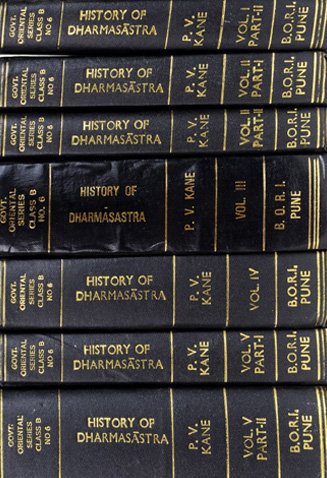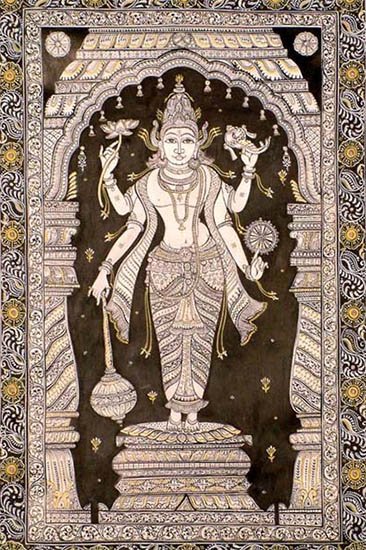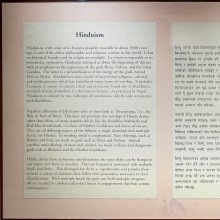Puraka, Pūraka: 25 definitions
Introduction:
Puraka means something in Buddhism, Pali, Hinduism, Sanskrit, Jainism, Prakrit, the history of ancient India, Marathi, Hindi. If you want to know the exact meaning, history, etymology or English translation of this term then check out the descriptions on this page. Add your comment or reference to a book if you want to contribute to this summary article.
Alternative spellings of this word include Purak.
Images (photo gallery)
In Hinduism
Dharmashastra (religious law)
Source: Wisdom Library: Dharma-śāstraPūraka (पूरक) refers to “inhaling” (of breath). It is one of the three types of ‘breath-suspension’ techniques, also known as prāṇāyāma. The word is used throughout Dharmaśāstra literature such as the Manusmṛti. (See the Manubhāṣya verse 6.70)

Dharmashastra (धर्मशास्त्र, dharmaśāstra) contains the instructions (shastra) regarding religious conduct of livelihood (dharma), ceremonies, jurisprudence (study of law) and more. It is categorized as smriti, an important and authoritative selection of books dealing with the Hindu lifestyle.
Yoga (school of philosophy)
Source: Wisdom Library: YogaPūraka (पूरक, “breathing in”) is a Sanskrit word referring to one of the three major breaths on which prāṇāyāma is built.

Yoga is originally considered a branch of Hindu philosophy (astika), but both ancient and modern Yoga combine the physical, mental and spiritual. Yoga teaches various physical techniques also known as āsanas (postures), used for various purposes (eg., meditation, contemplation, relaxation).
Natyashastra (theatrics and dramaturgy)
Source: Wisdom Library: Nāṭya-śāstraPuraka (पुरक) refers to a type of ornament (ābharaṇa) for the fingers (aṅguli) to be worn by females, according to Nāṭyaśāstra chapter 23. Such ornaments for females should be used in cases of human females and celestial beings (gods and goddesses).
Ābharaṇa (‘ornaments’, eg., puraka) is a category of alaṃkāra, or “decorations”, which in turn is a category of nepathya, or “costumes and make-up”, the perfection of which forms the main concern of the Āhāryābhinaya, or “extraneous representation”, a critical component for a successful dramatic play.

Natyashastra (नाट्यशास्त्र, nāṭyaśāstra) refers to both the ancient Indian tradition (shastra) of performing arts, (natya—theatrics, drama, dance, music), as well as the name of a Sanskrit work dealing with these subjects. It also teaches the rules for composing Dramatic plays (nataka), construction and performance of Theater, and Poetic works (kavya).
Shilpashastra (iconography)
Source: Shodhganga: Vaisnava Agamas And Visnu ImagesPūraka (पूरक) refers to a “flat bracelet” and represents a type of “hand-ornaments” (hastabhūṣaṇa), as defined in treatises such as the Pāñcarātra, Pādmasaṃhitā and Vaikhānasa-āgamas, extensively dealing with the technical features of temple art, iconography and architecture in Vaishnavism.—There are a number of ornaments for hand and arms. According to Bharata, [viz., kalāpī (string of pearls), śaṅkha (bracelet of conches), hastapatra (bracelet with design of creepers), pūraka (a flat bracelet) are the ornament for hand fist and upper part of wrist; and rings are meant for fingers].

Shilpashastra (शिल्पशास्त्र, śilpaśāstra) represents the ancient Indian science (shastra) of creative arts (shilpa) such as sculpture, iconography and painting. Closely related to Vastushastra (architecture), they often share the same literature.
Jyotisha (astronomy and astrology)
Source: Wisdom Library: Brihat Samhita by VarahamihiraPuraka (पुरक) refers to “citizens”, according to the Bṛhatsaṃhitā (chapter 5), an encyclopedic Sanskrit work written by Varāhamihira mainly focusing on the science of ancient Indian astronomy astronomy (Jyotiṣa).—Accordingly, “If the sun and moon should begin to be eclipsed when only half risen, deceitful men will suffer as well as sacrificial rites. [...] If they should be eclipsed when in the sign of Aquarius (Kumbha), hill men, men of western countries, carriers, robbers, shephards, serpents, worthy men, lions, citizens [i.e., puraka] and the people of Barbara will perish. If when in the sign of Pisces (Mīna), the products of the sea beach and of the sea, man of respectability and of learning and persons that live by water will suffer. Also those provinces will be affected which correspond to particular lunar mansions in which the eclipses happen to occur, as will be explained in the chapter (14) on Kūrmavibhāga”.
Source: Google Books: Studies in the History of the Exact Sciences (Astronomy)Pūraka (पूरक) means “to fill”, according to Bhāskara’s commentary on the Āryabhaṭīya.—Accordingly, “'How then is the one-sixtieth part of a nychthemeron to be determined?’ To this question, [the following] has to be said. In this connection some say: ‘The Ghaṭikā-yantra is a vessel [made out] of one of the metals like gold, silver or copper, hemispherical in shape (lit. semicircular), which holds sixty palas of water and which is filled [i.e., pūraka] with or discharges [the same amount of water]’ [...]”.

Jyotisha (ज्योतिष, jyotiṣa or jyotish) refers to ‘astronomy’ or “Vedic astrology” and represents the fifth of the six Vedangas (additional sciences to be studied along with the Vedas). Jyotisha concerns itself with the study and prediction of the movements of celestial bodies, in order to calculate the auspicious time for rituals and ceremonies.
Shaktism (Shakta philosophy)
Source: Google Books: ManthanabhairavatantramPūraka (पूरक) refers to the “filling” (of breath ?), according to the Manthānabhairavatantra, a vast sprawling work that belongs to a corpus of Tantric texts concerned with the worship of the goddess Kubjikā.—[...] From the Void of Oḍḍiyāna arises the undifferentiated (niṣkala) exhaled breath (prāṇa) of the Sun in Jālandhara. Its movement generates the Moon of inhaled breath (apāna), which is full and ‘filling’ (pūraka) in Pūrṇagiri. These three are Rudra's undivided fertilizing energy, which is Kāmarūpa present within the pure seminal potency of consciousness. Tisra is the bliss of the Yoni (bhagāhlāda). Finally, Koṅkaṇa is the condition of supreme repose. It is the supreme state where the Yoga, transcendent and immanent, that penetrates into the Space (ākāśa) of supreme reality, practiced in the seat Tisra attains its ultimate goal. Thus is it the symbol (bimba) of renunciation (tyāga) of the other seats and their states, which is the liberated condition.

Shakta (शाक्त, śākta) or Shaktism (śāktism) represents a tradition of Hinduism where the Goddess (Devi) is revered and worshipped. Shakta literature includes a range of scriptures, including various Agamas and Tantras, although its roots may be traced back to the Vedas.
In Buddhism
Mahayana (major branch of Buddhism)
Source: academia.edu: A Study and Translation of the GaganagañjaparipṛcchāPūraka (पूरक) or Paripūraka refers to “fulfilling (the eighteen special qualities of the Tathāgata)”, according to the Gaganagañjaparipṛcchā: the eighth chapter of the Mahāsaṃnipāta (a collection of Mahāyāna Buddhist Sūtras).—Accordingly: “This is the armour of Bodhisattvas: [...] (13) this is the armour of knowing the superior or inferior abilities of all living beings by the insight and knowledge; (14) this is the armour of fulfilling ten powers by the attainment of the power of insight and knowledge; (15) this is the armour of attaining fearlessness because their resolutions never decrease; (16) this is the armour of fulfilling (paripūraka) the eighteen special qualities of the Tathāgata (aṣṭādaśāveṇika-buddhadharma) by fulfilling all good qualities and by abandoning all bad qualities; [...]

Mahayana (महायान, mahāyāna) is a major branch of Buddhism focusing on the path of a Bodhisattva (spiritual aspirants/ enlightened beings). Extant literature is vast and primarely composed in the Sanskrit language. There are many sūtras of which some of the earliest are the various Prajñāpāramitā sūtras.
In Jainism
General definition (in Jainism)
Source: The University of Sydney: A study of the Twelve ReflectionsPūraka (पूरक) refers to “inhalation” and represents one of the three kinds of “breath-control” (prāṇāyāma), according to the 11th century Jñānārṇava, a treatise on Jain Yoga in roughly 2200 Sanskrit verses composed by Śubhacandra.—Accordingly, “Breath control is praised by mendicants, whose own opinions are well-established, for the accomplishment of meditation and for steadiness of the inner self. Therefore, it should be learned directly and before [meditation] by the wise. Otherwise, even a little mastering of the mind cannot be done. It is considered by the teachers of old as threefold in accordance with the difference in characteristics. There is inhalation (pūraka), holding and, immediately after that, exhalation”.

Jainism is an Indian religion of Dharma whose doctrine revolves around harmlessness (ahimsa) towards every living being. The two major branches (Digambara and Svetambara) of Jainism stimulate self-control (or, shramana, ‘self-reliance’) and spiritual development through a path of peace for the soul to progess to the ultimate goal.
India history and geography
Source: Cologne Digital Sanskrit Dictionaries: Indian Epigraphical GlossaryPūraka.—(CII 3; etc.), used as a termination of the names of villages. Note: pūraka is defined in the “Indian epigraphical glossary” as it can be found on ancient inscriptions commonly written in Sanskrit, Prakrit or Dravidian languages.

The history of India traces the identification of countries, villages, towns and other regions of India, as well as mythology, zoology, royal dynasties, rulers, tribes, local festivities and traditions and regional languages. Ancient India enjoyed religious freedom and encourages the path of Dharma, a concept common to Buddhism, Hinduism, and Jainism.
Languages of India and abroad
Pali-English dictionary
Source: BuddhaSasana: Concise Pali-English Dictionarypūraka : (adj.) one who fills; fulfils or completes; full; full of.
Source: Sutta: The Pali Text Society's Pali-English DictionaryPūraka, (adj.) (=pāra+ka) filling (-°) Vism. 106 (mukha°). (Page 471)

Pali is the language of the Tipiṭaka, which is the sacred canon of Theravāda Buddhism and contains much of the Buddha’s speech. Closeley related to Sanskrit, both languages are used interchangeably between religions.
Marathi-English dictionary
Source: DDSA: The Molesworth Marathi and English Dictionarypūraka (पूरक).—a S That fills, completes, satisfies, satiates.
--- OR ---
pūraka (पूरक).—m S Closing the right nostril and drawing up air through the left. A religious ceremonial.
Source: DDSA: The Aryabhusan school dictionary, Marathi-Englishpūraka (पूरक).—a That fills, or satisfies.
Marathi is an Indo-European language having over 70 million native speakers people in (predominantly) Maharashtra India. Marathi, like many other Indo-Aryan languages, evolved from early forms of Prakrit, which itself is a subset of Sanskrit, one of the most ancient languages of the world.
Sanskrit dictionary
Source: DDSA: The practical Sanskrit-English dictionaryPūraka (पूरक).—a. [pūr-ṇvul]
1) Filling up, completing.
2) Satisfying, making content.
-kaḥ 1 The citron tree.
2) A ball of meal offered at the conclusion of the oblations to the manes.
3) (In arith.) The multiplier.
4) Closing the right nostril and inhaling air through the left (as a religious ceremony); cf. रेचक (recaka).
5) Flood, stream, effusion (pūra); सिञ्चाङ्ग नस्त्वदधरामृतपूरकेण (siñcāṅga nastvadadharāmṛtapūrakeṇa) (hṛcchayāgnim) Bhāgavata 1.29.35.
Source: Cologne Digital Sanskrit Dictionaries: Shabda-Sagara Sanskrit-English DictionaryPūraka (पूरक).—mfn.
(-kaḥ-kā-kaṃ) Filling, completing, or that which fills or completes. 2. Filling up. 3. Satisfying. m.
(-kaḥ) 1. A citron, (Citrus medica.) 2. The multiplier. (In arithmetic.) 3. Closing the right nostril, and drawing up air through the left, a religious ceremonial. 4. The funeral cake or cakes that must be given to complete the obsequial rites. E. pūr to fill, aff. kun.
Source: Cologne Digital Sanskrit Dictionaries: Benfey Sanskrit-English DictionaryPūraka (पूरक).—[pūr + aka], I. adj. 1. Filling. 2. Filling up, [Mānavadharmaśāstra] 9, 289. 3. Satisfying, Mahābhārata 1, 75. Ii. m. 1. Closing the right nostril, and drawing up air through the left, a religious observance, [Vedāntasāra, (in my Chrestomathy.)] in
Pūraka (पूरक).—[adjective] = [preceding] (—° or *[genetive]); [masculine] stream, gush, [feminine] pūrikā a sort of cake.
Source: Cologne Digital Sanskrit Dictionaries: Monier-Williams Sanskrit-English Dictionary1) Pūraka (पूरक):—[from pūra] mfn. filling, completing, fulfilling, satisfying (ifc. or with [genitive case]; cf. [Pāṇini 2-3, 70; Kāśikā-vṛtti]), [Manu-smṛti; Mahābhārata] etc.
2) [v.s. ...] m. flood, stream, effusion, [Bhāgavata-purāṇa]
3) [v.s. ...] (in [arithmetic]) the multiplier
4) [v.s. ...] m. a ball of meal offered at the conclusion of the oblations to the Pitṛs, [cf. Lexicographers, esp. such as amarasiṃha, halāyudha, hemacandra, etc.] (also -piṇḍa m., [Manvarthamuktāvalī, kullūka bhaṭṭa’s Commentary on manu-smṛti on Manu-smṛti v, 85])
5) [v.s. ...] m. closing the right nostril with the forefinger and then drawing up air through the left and then closing the left nostril and drawing up air through the right (as a religious exercise), [Religious Thought and Life in India 402]
6) [v.s. ...] the citron tree, [cf. Lexicographers, esp. such as amarasiṃha, halāyudha, hemacandra, etc.]
Source: Cologne Digital Sanskrit Dictionaries: Yates Sanskrit-English DictionaryPūraka (पूरक):—[(kaḥ-kā-kaṃ) a.] Filling, completing. m. A citron; the multiplier; closing the right nostril and drawing air through the left; the final funeral cake.
Source: DDSA: Paia-sadda-mahannavo; a comprehensive Prakrit Hindi dictionary (S)Pūraka (पूरक) in the Sanskrit language is related to the Prakrit words: Ūraya, Pūraga.
[Sanskrit to German]
Sanskrit, also spelled संस्कृतम् (saṃskṛtam), is an ancient language of India commonly seen as the grandmother of the Indo-European language family (even English!). Closely allied with Prakrit and Pali, Sanskrit is more exhaustive in both grammar and terms and has the most extensive collection of literature in the world, greatly surpassing its sister-languages Greek and Latin.
Hindi dictionary
Source: DDSA: A practical Hindi-English dictionaryPūraka (पूरक) [Also spelled purak]:—(nm) a supplement; filler; (a) supplementary; reinforc: ing; hence ~[tā] (nf).
...
Kannada-English dictionary
Source: Alar: Kannada-English corpusPūraka (ಪೂರಕ):—
1) [adjective] making up what is lacking in one another; completing; complementing; complementary.
2) [adjective] helping; supplementing; supplementary.
3) [adjective] satisfying; gratifying.
--- OR ---
Pūraka (ಪೂರಕ):—
1) [noun] = ಪೂರ [pura]1 - - 8, 9, 10 & 11.
2) [noun] that which makes up what is lacking; a complementary.
3) [noun] the food (usu. in the form of a ball) offered to the manes.
4) [noun] (math.) the number by which another number is or is to be, multiplied; a multiplier.
Kannada is a Dravidian language (as opposed to the Indo-European language family) mainly spoken in the southwestern region of India.
See also (Relevant definitions)
Starts with: Pura-katupatal, Puraka-bajeta, Puraka-kharca, Puraka-pariksha, Puraka-prashna, Purakakumbhakarecaka, Purakalpa, Purakalpavid, Purakam, Purakanem, Purakaparikshe, Purakapekshi-kriya, Purakapinda, Purakappul, Purakara, Purakaran, Purakarana, Purakatha.
Ends with (+25): Adhyavapuraka, Akshamshapuraka, Anicchapuraka, Anupuraka, Arghashtapuraka, Bahapuraka, Bijapuraka, Brahmapuraka, Dvipakarpuraka, Ganapuraka, Ghritapuraka, Gopuraka, Gudapuraka, Kancipuraka, Karmapuraka, Karnapuraka, Karpuraka, Kathapuraka, Kollapuraka, Kramapuraka.
Full-text (+43): Phalapuraka, Pranayama, Purakam, Karnapuraka, Recaka, Supuraka, Vamshapuraka, Vanapuraka, Raktapuraka, Shravanapuraka, Bijapuraka, Kancipuraka, Simhapuraka, Brahmapuraka, Nandipuraka, Purakakumbhakarecaka, Sarvapuraka, Purakapinda, Vanabija, Purika.
Relevant text
Search found 46 books and stories containing Puraka, Pūraka; (plurals include: Purakas, Pūrakas). You can also click to the full overview containing English textual excerpts. Below are direct links for the most relevant articles:
Garga Samhita (English) (by Danavir Goswami)
Verses 6.10.7-9 < [Chapter 10 - In the Description of the Gomatī River, the Glories of Cakra-tīrtha]
Puranic encyclopaedia (by Vettam Mani)
Yogadrstisamuccaya of Haribhadra Suri (Study) (by Riddhi J. Shah)
Chapter 4.4a - The Fourth: Dīprādṛṣṭi (dīprā-dṛṣṭi)—Introduction < [Chapter 4 - The Eight Yogadṛṣṭis and the nature of a Liberated Soul]
Brihad Bhagavatamrita (commentary) (by Śrī Śrīmad Bhaktivedānta Nārāyana Gosvāmī Mahārāja)
Verse 2.1.138-140 < [Chapter 1 - Vairāgya (renunciation)]
Verse 2.4.135 < [Chapter 4 - Vaikuṇṭha (the spiritual world)]
Gitartha Samgraha (critical Study) (by Partha Sarathi Sil)
2. Literary and Socio-cultural Value of the Gītārthasaṅgraha < [Chapter 5 - Linguistic, Literary And Cultural Value Of Gītārthasaṅgraha]
Related products

